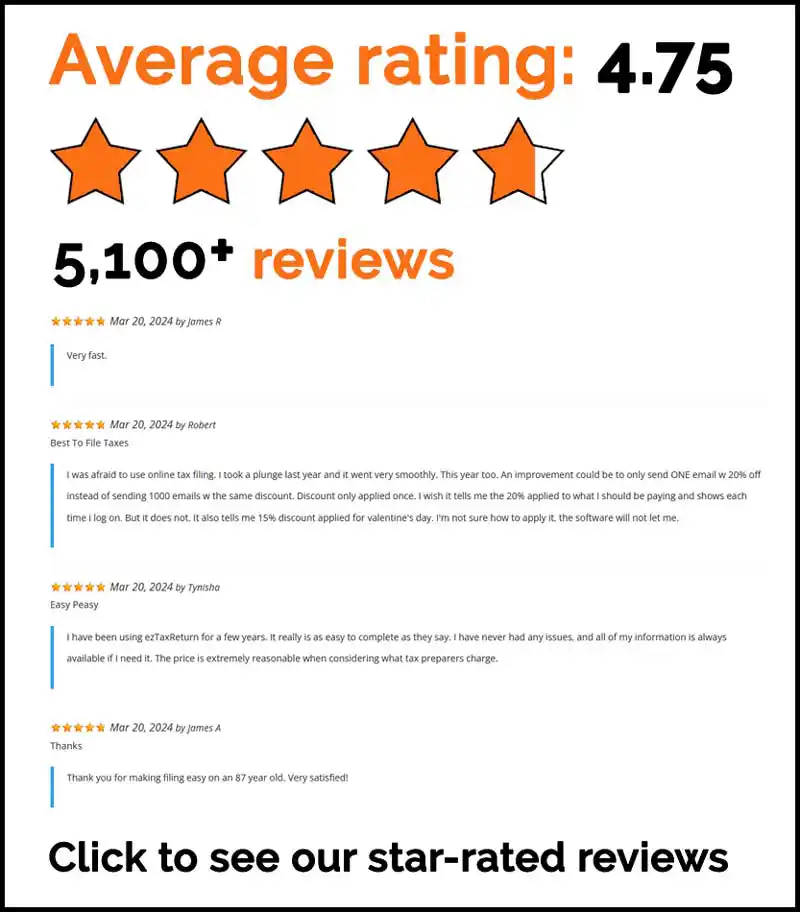The information in this article is up to date for tax year 2025 (returns filed in 2026).
Tax season can be stressful, especially when you’re not sure what tax deductions you can claim. The good news is, you’re probably eligible for more deductions than you realize! Whether you’re filing for the first time or you’re a seasoned pro, understanding which deductions apply to you can help reduce your taxable income and get a bigger refund. Here the most common tax deductions you might be missing and how you can make the most of them.
Key Takeaways
- Understanding the difference between above-the-line and below-the-line tax deductions can help you maximize your tax savings.
- Choosing between the standard deduction and itemizing your deductions is crucial; itemize only if your eligible expenses exceed the standard deduction.
- Tax deductions for areas like medical expenses, mortgage interest, and charitable contributions can significantly lower your taxable income, resulting in a larger refund.
Tax Deductions 101: How to Keep More of Your Money
At its core, a tax deduction is a way to lower the amount of your income that is subject to tax, effectively reducing the amount you owe. There are two main types of deductions: above-the-line and below-the-line deductions.
Above-the-line deductions reduce your taxable income before calculating your adjusted gross income (AGI). This is significant because your AGI determines your eligibility for many other tax benefits. On the other hand, below-the-line deductions, also known as itemized deductions, are subtracted after your AGI is calculated and include various expenses like medical costs and mortgage interest.
Knowing how these deductions work can influence your tax savings across different brackets. Knowing whether to take the standard deduction or itemize can make a significant difference in your tax bill. With this knowledge, you can plan your finances to maximize tax savings and potentially secure a bigger refund.
Mastering the basics of tax deductions prepares you to navigate tax season and make informed decisions to keep more money in your pocket. Next, we’ll explore the differences between the standard deduction and itemized deductions to determine which is more beneficial.
Standard Deduction vs. Itemized Deductions
When filing your taxes, you have a choice to make: take the standard deduction or itemize your deductions. The standard deduction is a fixed amount that reduces your taxable income, and for tax year 2025, it stands at:
- $15,750 for Single and Married Filing Separately
- $31,500 for Married Filing Jointly and Surviving Spouses
- $23,625 for Head of Household
Certain taxpayers, such as those 65 and older or blind, can receive an additional standard deduction.
Itemized deductions, on the other hand, are based on actual expenses. They can include medical expenses, charitable contributions, and state and local taxes, among others. If your itemized deductions surpass the standard deduction, it is beneficial to itemize them on your tax return. You cannot claim both the standard deduction and itemized deductions. It’s one or the other.
Choosing between the two often comes down to which option lowers your tax liability more. If your eligible expenses exceed the standard deduction, itemizing could result in greater tax savings. Tax software, like ezTaxReturn, can help you determine which option is best for your situation by comparing the total deductions.
With this choice made, we can now explore some common tax deductions and tax break options that many individuals can benefit from.
Common Tax Deductions for Individuals
Many taxpayers overlook common deductions that can significantly lower their tax bills. Among these are deductions for unreimbursed medical expenses, mortgage interest, and charitable contributions. Everyday purchases, retirement contributions, and even home office expenses can qualify as deductible expenses.
Let’s delve into some of these common deductions in more detail.
Medical Expenses Deduction
Medical expenses can quickly add up, but the IRS allows you to deduct medical and dental expenses that exceed 7.5% of your adjusted gross income (AGI). This means if your AGI is $50,000, you can only deduct the portion of your medical expenses that exceed $3,750.
Deductible medical expenses include payments for medical and dental insurance premiums, out-of-pocket costs like office co-pays, and prescriptions. These expenses must be paid by you and not through payroll deductions to qualify for the medical expense deduction.
You need to itemize these deductions on Schedule A of your tax return. Meticulous record-keeping of all medical costs ensures you can substantiate your claims during tax time.
Mortgage Interest Deduction
If you’re a homeowner, the mortgage interest deduction can be a significant tax benefit. This deduction allows you to deduct the interest paid on qualified home loans, including second mortgages. Reducing your taxable income with this deduction can lower your overall tax bill.
However, there are limitations to be aware of. For instance, there may be caps on the total amount of mortgage interest you can deduct. Despite these limits, the mortgage interest deduction remains a powerful tool for homeowners looking to reduce their taxable income.
To claim this deduction, itemize on Schedule A. This allows you to benefit from the tax savings associated with homeownership.
Charitable Contributions Deduction
Giving back to the community can also provide tax benefits. Qualifying charitable contributions include cash donations and goods given to tax-exempt organizations. You can deduct these contributions. The limit is up to 60% of your adjusted gross income.
When donating goods, you can deduct the current fair market value at the time of donation. Additionally, if you drive for charitable purposes, you can deduct mileage at 14 cents per mile.
For cash contributions over $300, itemize on Schedule A. Detailed records of donations help maximize your tax savings.
Education-Related Tax Deductions
Education-related tax deductions can help mitigate the cost of higher education. Various tax credits and deductions are available to taxpayers to help with education expenses. Among these, the student loan interest deduction is particularly beneficial.
Student Loan Interest Deduction
The student loan interest deduction allows you to deduct up to $2,500 of interest paid on student loans, even if you do not itemize other deductions. This deduction can significantly reduce your taxable income.
However, there are income limits to qualify for this deduction. Only the person legally responsible for the loan can claim the deduction. Both required and voluntary interest payments qualify for this deduction, providing more flexibility for taxpayers.
Keep detailed records of all interest payments throughout the year to fully benefit from this deduction.
Retirement Contributions and Savings
Saving for retirement not only secures your future but also offers tax benefits. Contributions to retirement accounts like IRAs and 401(k)s can reduce your taxable income and lower your tax bill.
IRA Contributions Deduction
Contributing to a Traditional IRA can provide a valuable tax deduction. For 2025, the maximum traditional IRA contribution limit is $7,000 ($8,000 if you’re 50 or older). In 2026, the contribution limit will be increasing to $7,500 ($8,600 if you’re 50 or older). Tax day which is April 15, 2026 is the deadline for make contributions for 2025. You do not need to itemize your deductions to claim the IRA deduction.
If you are covered by a retirement plan at work, there may be limitations on the deduction. However, the Saver’s Credit can be claimed on contributions to various retirement plans, including IRAs and 401(k)s, providing additional tax benefits.
Contributing to an IRA reduces your taxable income while helping you save for the future.
401(k) Contributions Deduction
Contributing to a 401(k) plan reduces your taxable income because contributions are made before taxes are applied. The maximum contribution limit for 2025 is $23,500. If you are 50 to 59 years old or you can contribute an additional $7,500. Those ages 60 to 63 can contribute an additional $11,250 as catch-up contributions. In 2026, the 401(k) contributions limits will be rising to:
$24,500 for those under age 50
$32,500 if you’re 50 to 59 years old
$35,750 if you’re between 60 and 63
Both employees and self-employed individuals can open a 401(k) plan, making it a versatile option for retirement savings. This deduction helps you lower your taxable income and save effectively for retirement.
Self-Employment and Business Deductions
Self-employed individuals have access to a variety of deductions that can significantly lower their taxable income. These include deductions for home office expenses, self-employment expenses, and qualified business income.
Home Office Deduction
To qualify for the home office deduction, your home office must be used exclusively for business purposes. The simplified method allows for a $5 per square foot deduction up to 300 square feet.
Under the standard method, you can calculate the deduction based on the percentage of your home used for business. This requires filing Form 8829 with Schedule C.
Self-employed individuals can claim this deduction as a business expense on Schedule C, without needing to itemize. This can provide significant tax savings.
Self-Employment Expenses Deduction
Self-employed individuals can deduct various expenses such as mileage, business insurance, meals, and travel. Ordinary and necessary expenses are eligible for deduction.
Documentation is crucial for claiming these deductions. You must keep detailed records of all business-related expenses. This includes itemized bills for telephone and internet expenses, and mileage logs for vehicle expenses.
Accurate record-keeping ensures you claim all eligible deductions and maximize tax savings.
Qualified Business Income Deduction
The qualified business income deduction allows eligible self-employed individuals to deduct up to 20% of their taxable business income. This deduction promotes entrepreneurship by reducing taxable income.
Eligibility depends on income thresholds and the nature of the business. For high earners, phase-out limits may apply, affecting the amount that can be deducted. This deduction can provide substantial tax savings for self-employed individuals.
State and Local Tax Deductions
State and local tax (SALT) deductions allow taxpayers who itemize to reduce their taxable income by deducting certain state and local taxes paid, as well as considering their federal income tax obligations.
State and Local Taxes (SALT) Deduction
The SALT deduction encompasses state income taxes and real estate taxes. It also includes personal property taxes. For most taxpayers, deducting state income tax is more beneficial than deducting sales tax. The maximum amount that can be deducted under the SALT deduction is capped at $40,000. To claim this deduction, you need to itemize your deductions on your federal tax return.
By understanding the limitations and benefits of the SALT deduction, you can make informed decisions to maximize your tax savings.
Property Tax Deduction
The property tax deduction covers real estate taxes. It also includes taxes on personal property. These taxes must be assessed and paid during the current tax year to qualify for deduction.
There is a cap for the property tax deduction when itemizing, which is $40,000, or $20,000 for those married filing separately. Staying within these limits helps homeowners reduce their taxable income and overall tax bill.
Miscellaneous Tax Deductions
Beyond the more common deductions, there are several miscellaneous deductions that can also help reduce your taxable income. These include gambling losses and educator expenses, among others.
Let’s explore a couple of these in more detail.
Gambling Loss Deduction
If you enjoy gambling, you might be able to deduct your losses, but only if you itemize your deductions on your tax return. It’s important to note that you cannot deduct more gambling losses than you report as winnings.
To claim this deduction, you need to keep detailed records of your gambling activities, including winnings, losses, and related expenses. This way, you can ensure you are accurately reporting and maximizing your potential tax savings.
Educator Expenses Deduction
Teachers and other eligible educators can deduct up to $300 of unreimbursed classroom expenses to reduce their taxable income. For married couples filing jointly where both spouses are educators, the combined deduction is $600.
Importantly, educators do not need to itemize their deductions to claim this benefit. Educators can use receipts for classroom supplies and related expenses to benefit from this deduction and lower their tax bill.
Claiming Your Tax Deductions
Claiming tax deductions can be done in two ways: taking the standard deduction or itemize deductions. If your individual deductible expenses exceed the standard deduction, itemizing may result in greater tax savings. Tax software can assist in determining which option is best by comparing the total deductions you qualify for.
To file for deductions, you must gather supporting documents that validate your expenses, such as receipts and invoices. Filing with ezTaxReturn helps ensure you claim all the deductions and credits you’re eligible for, maximizing your tax savings.
Accurate record-keeping and understanding your options help you reduce taxable income and your overall tax bill.
Keeping Accurate Records
Maintaining thorough records of all financial transactions simplifies tax preparation and ensures compliance with tax regulations. The IRS mandates that records related to income, deductions, and credits should generally be retained for a minimum of three years after filing.
Using accounting software can enhance the tracking of business expenses and income, facilitating easier tax return preparation. Organizing documentation like receipts and invoices supports your claims during potential IRS audits.
Use ezTaxReturn to Claim Your Deductions
Using automated tax software can ensure that your deductions are maximized and accurately claimed. The software includes prompts and step-by-step guidance to help taxpayers claim all eligible deductions efficiently.
Using ezTaxReturn simplifies tax preparation, reduces tax liability, and ensures you claim all available deductions and credits.
Summary
In summary, understanding and claiming tax deductions is a powerful way to reduce your taxable income and maximize your refund. Whether it’s through medical expenses, mortgage interest, charitable contributions, or self-employment expenses, there are numerous deductions available to you.
By keeping accurate records and using tax software, you can ensure you are taking full advantage of all the deductions and credits available to you. Remember, the goal is to lower your tax bill and keep more of your hard-earned money in your pocket. Happy filing!
Frequently Asked Questions
What tax deductions can I claim on my tax return?
Common tax deductions include the standard deduction, charitable contributions, medical expenses, mortgage interest, student loan interest, and certain business or self-employment expenses.
What is the difference between a tax deduction and a tax credit?
A tax deduction lowers your taxable income, which can reduce your tax bill, while a tax credit directly reduces the amount of tax you owe, making credits generally more valuable.
Can I claim both the standard deduction and itemized deductions?
No. You must choose either the standard deduction or itemized deductions. If your eligible expenses exceed the standard deduction, itemizing may save you more.
How do I know whether I should itemize deductions or take the standard deduction?
You should itemize if your total deductible expenses are higher than the standard deduction for your filing status. Otherwise, the standard deduction is usually the better option.
What expenses qualify for the medical expenses deduction?
You can deduct qualifying medical expenses, such as insurance premiums, prescriptions, and out-of-pocket healthcare costs if they exceed 7.5% of your adjusted gross income (AGI).
How do I claim the home office deduction?
To claim the home office deduction, the space must be used regularly and exclusively for business. Eligible filers can choose between the simplified or standard calculation method.
What tax deductions are available for self-employed individuals?
Self-employed taxpayers may deduct business expenses like supplies, mileage, home office costs, and part of their self-employment tax.
Can I deduct charitable donations on my tax return?
Yes, donations to qualified charities may be deductible if you itemize. Cash contributions are generally deductible up to 60% of your AGI, and donations over $250 require a receipt.
Do tax deductions increase my refund?
Tax deductions reduce your taxable income, which can lower the amount of tax you owe and may increase your refund.
How can tax software help me claim deductions I qualify for?
Tax software like ezTaxReturn helps identify common deductions based on your income and expenses and ensures they’re applied correctly when you file.
The articles and content published on this blog are provided for informational purposes only. The information presented is not intended to be, and should not be taken as, legal, financial, or professional advice. Readers are advised to seek appropriate professional guidance and conduct their own due diligence before making any decisions based on the information provided.




